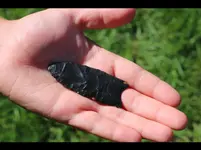Scorpio_queen6
Full Member
- Joined
- Jun 13, 2016
- Messages
- 100
- Reaction score
- 108
- Golden Thread
- 0
- Location
- New Jersey
- Primary Interest:
- All Treasure Hunting
Hi All,
So I have been searching for artifacts for a while now. I've only found a few things but NO arrowheads. I keep finding chert/flint and quarts. Chert flakes for sure and they are definitely worked. Is it likely that there are arrowheads in the area as well? Where should I look? By rivers/streams? I live in NJ and my backyard is all woods where the Lenape lived.
Any advice is appreciated.
Thanks!
-Jess
So I have been searching for artifacts for a while now. I've only found a few things but NO arrowheads. I keep finding chert/flint and quarts. Chert flakes for sure and they are definitely worked. Is it likely that there are arrowheads in the area as well? Where should I look? By rivers/streams? I live in NJ and my backyard is all woods where the Lenape lived.
Any advice is appreciated.
Thanks!
-Jess
Amazon Forum Fav 👍
Upvote
0






